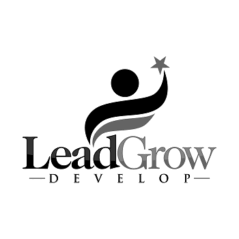Networking events are gold mines for business expansion if you properly present yourself. Whether you’re a business owner, entrepreneur, or professional trying to boost your profile, these events offer the ideal chance to highlight your brand, create relationships, and generate leads. Still, mere presence is insufficient. To leave a lasting impact and seize possibilities from discussions, you must use strategy. This guide will break down some main strategies to enable you to properly market your company at networking events.
Make a Strong First Impression
First impressions are crucial, particularly in networking events, when you have only a moment to stand out. People’s impression of you primarily depends on how you look, body language, and confidence right from the time you go into the room. Dress reasonably for the kind of event you are attending, but professionally. While a corporate networking event could demand formal business wear, a tech startup mixer might call for smart-casual clothing.
Make sure you look put together and polished, regardless of the dress code. Your opening should be interesting, brief, and clear. Try something more interesting than the standard “Hi, I’m John. I run a business.” I assist companies in simplifying their marketing to increase customer engagement. This tells folks right away what you do and how you might bring value. A good and friendly presence will also be established with eye contact, a strong handshake, and a genuine smile. People recall your emotional impact, so act confidently and engagingly.
And while in-person impressions matter, staying top-of-mind after the event is just as crucial. A modern networking app like MYBZZ helps you follow up faster, connect smarter, and nurture professional relationships long after the handshake. It’s designed specifically for entrepreneurs who want to turn real-world conversations into real-world collaborations.
Master the Art of Conversation
A good networking event is more about the quality of the discussions you have than about the quantity of business cards you distribute. Emphasize developing relationships rather than launching a sales pitch straightforwardly.
Ask open-ended questions beginning with:
- “What motivated you to launch your business?”
- “What is the biggest obstacle you currently find yourself facing?”
- “What type of customers do you enjoy dealing with?”
This promotes real communication and clarifies the requirements of the other person. Once you know what they are searching for, you will be easily able to provide your company with a solution, without feeling pressured. Be a wonderful listener as well. Too many people pay more attention to what they will say going forward than to really hearing the other person. Not only does active listening help you to be more likable, but it also lets you more precisely modify your pitch when the time is perfect.
Have a Memorable Elevator Pitch
Your secret weapon at a networking event is a strong elevator pitch. This is a quick, strong overview of your work and the justifications for its significance. It should be preferably 30 to 60 seconds long—just enough to spark interest without dulling the listener. A strong elevator pitch is based more on the benefits than on the mere company characteristics.
Instead of saying, “I own a marketing agency,” say something like, “I help small businesses create more leads and boost sales by strategic digital marketing.” This emphasizes the worth you contribute. To keep the discussion going, finishing your pitch with a question helps. For instance: “Do you currently utilize any marketing strategies for your business?” This encourages engagement and creates the avenue for more thorough conversation.
Bring the Right Marketing Materials
Although networking is mostly based on conversations, having appropriate marketing tools can make a big difference. Professionally designed and easy to see, your business cards should contain important information, including your name, company name, phone number, email, and website. Another clever touch may be a QR code connecting to your LinkedIn page or website.
Bring, if appropriate, fliers, pamphlets, or a one-page company overview stressing your products or services. Having something physical for people to carry with them can be innovative if you work in a field like food, fashion, or promotional products where samples make sense. Another advantage is to have your resources on your phone in digital form. While some people prefer digital over paper, being able to swiftly text or email your information can help with follow-up.
Creating an Engaging Trade Show Booth
The impression of your brand will be much influenced by a well-designed trade show booth. Focus on catching visuals, clear branding, and a friendly layout to stand out in a packed area. Draw people in with excellent banners, engaging displays, and strategic lighting.
A backlit trade show booth, for instance, can improve visibility and produce a modern, professional appearance that draws attention from across the room. For more complex events, organisations often work with experienced partners like Ch3 Agency, who specialise in designing events that empower Web3 ecosystems, helping create immersive brand moments that resonate beyond the event itself. Ensure your booth has clear messaging and engaging elements—such as product demos or giveaways— to attract visitors. A friendly staff prepared to interact with guests can help to maximize the success of your booth.
Conclusion
Marketing your business during networking events is about creating real connections, having interesting conversations, and carefully following up—not only about distributing business cards. Making a solid first impression, mastering conversations, creating a strong elevator pitch, carrying the appropriate marketing materials, and following up properly will help you turn networking events into strong chances for business growth. Therefore, arrive at a networking event confident and with a strategy in mind. The correct strategy can open doors to business opportunities, alliances, and new customers that will help your brand to grow.
